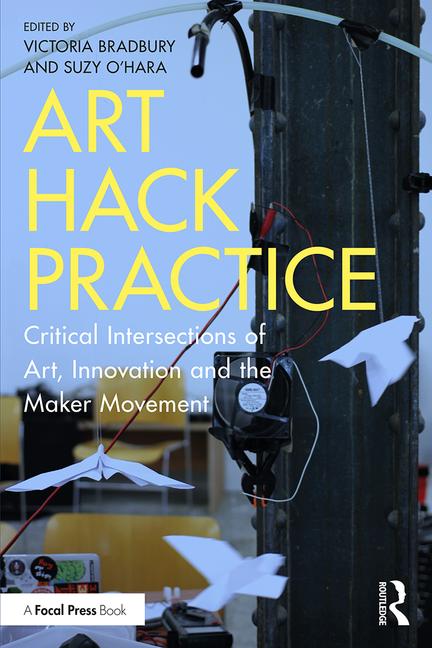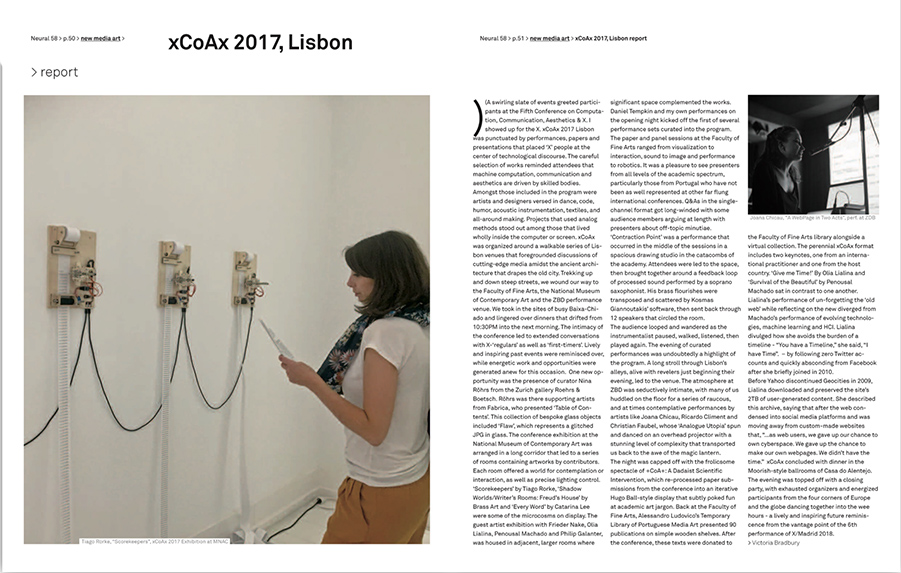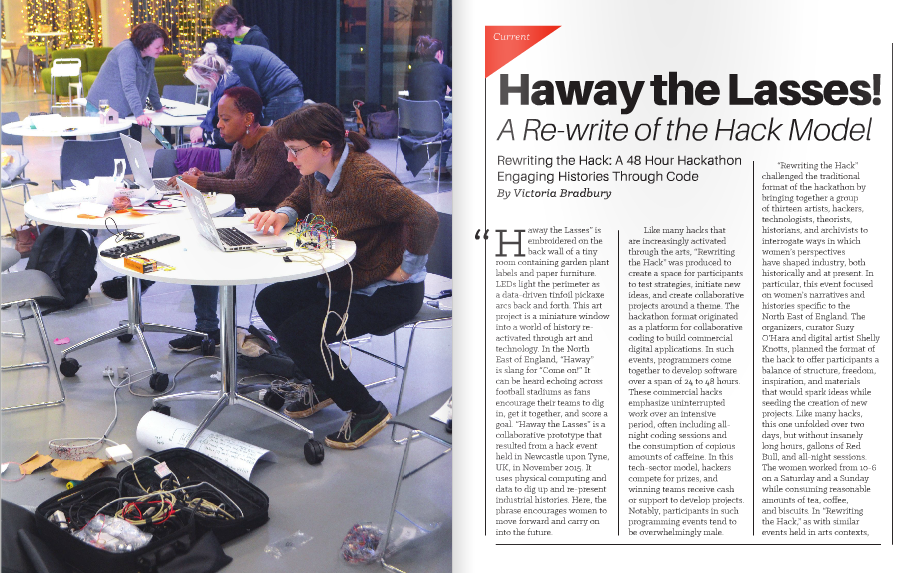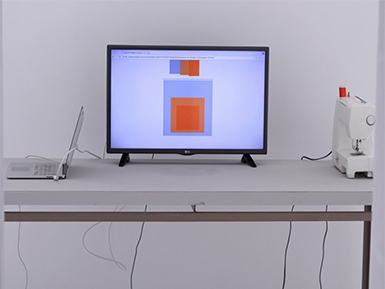Writing
Art Hack Practice:
Critical Intersections of Art,
Innovation and the Maker Movement
Edited by Victoria Bradbury & Suzy O'Hara
with many fantastic contributors!
See publisher's link for Table of Contents.
Routledge: Focal Press | Released Fall 2019
Bridging art and innovation, this book invites readers into the processes of artists, curators, cultural producers and historians who are working within new contexts that run parallel to or against the phenomenon of ‘maker culture’.
The book is a fascinating and compelling resource for those interested in critical and interdisciplinary modes of practice that combine arts, technology and making. It presents international case studies that interrogate perceived distinctions between sites of artistic and economic production by brokering new ways of working between them. It also discusses the synergies and dissonances between art and maker culture, analyzes the social and collaborative impact of maker spaces, and reflects upon the ethos of the hackathon within the fabric of a media lab’s working practices.
Art Hack Practice: Critical Intersections of Art, Innovation and the Maker Movement is essential reading for courses in art, design, new media, computer science, media studies and mass communications as well as those working to bring new forms of programming to museums, cultural venues, commercial ventures, and interdisciplinary academic research centers.
xcoax 2017, Lisbon (Review)
Neural Magazine: Issue 58, Autumn 2017
This review for Neural Magazine discusses key moments in the exhibition, performance and conference program at the 2017 xCoAx conference, held at the Faculdade de Belas-Artes da Universidade de Lisboa, Portugal. It mentions artworks by Joana Chicau, Daniel Tempkin and others, as well as keynote presentations by Olia Lialina and Penousal Machado.
Haway the Lasses! A Rewrite of the Hack Model
Armseye Magazine, Issue II, Winter 2016
This article for Armseye Magazine's second issues presents Rewriting the Hack, an event that took place at The Core Science Central in Newcastle, UK, in November 2015. Like many hacks that are increasingly activated within the arts, Rewriting the Hack was produced to create a space for participants to test strategies, initiate new ideas and create collaborative projects around a theme. Rewriting the Hack challenged the traditional format of the hackathon by bringing together a group of thirteen artists, hackers, technologists, theorists, historians and archivists to interrogate ways in which female perspectives have shaped industry, both historically and in the present. This focused on women’s narratives and histories in the North East of England. The organizers, curator Suzy O’Hara and digital artist Shelly Knotts, planned the format of the hack to offer participants a balance of structure, freedom, inspiration and materials that would spark ideas while seeding the creation of new projects.
Evaluating Art Hacking Events Through Practice
Proceedings of the International Symposium on Electronic Art
co-written with Suzy O'Hara for ISEA 2016
The hackathon format, which began as a commercial digital model, has been modified across different communities within the arts and cultural sectors. Adjusting the hack to work within the arts presents logistical challenges to organisers. The authors of this paper, an arts curator and artist-practitioner, have organised and run hack-style events together since 2014. In this research, they define hacks and cite examples of recent art and cultural hacks. They then present a series of three case studies that describe their collaborative projects. An analysis of this research shows that the format of the hack event has been modified in a variety of ways across different projects. These include removing competitive aims, considering needs that are specific to arts participants, strategically planning materials and resources, and carefully considering exhibition and showcase formats.
Skirting Color //Stitching Code:
Versioning Albers in the Browser
Proceedings of xCoAx 2017
In Skirting Color // Stitching Code, a performer alternates between live coding a Josef Albers color study website and manually machine embroidering the same HTML and CSS onto her skirt, turning the garment around her waist as she sews. In this paper, Albers’ theory and pedagogy are evaluated as they relate to this performance and to code.

The Performativity of Code in
Participatory New Media Artworks
PhD Thesis June 2015 University of Sunderland
Supervisors: Beryl Graham, Sarah Cook, Lynne Hall
In The Performativity of Code in Participatory New Media Artworks, programming code, participants, and objects are enacted across a series of practical projects. Inke Arns’ introduction of the phrase “the performativity of code” to new media art discourse is a starting point for a contextual review. New media and performance art theory are emphasised and instruction-based artworks are viewed in parallel to the development of object-oriented programming. Research questions seek to define code and performativity and evaluate when the performance occurs. By reviewing literature alongside artworks, a theoretical system of categories develops and body, object, code, and linguistics are viewed as they overlap and intertwine. Code is considered performative both when it is written and when it runs within a final artwork.
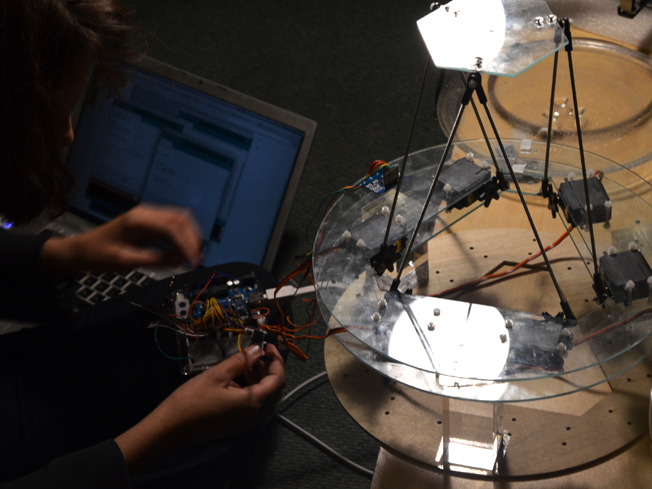
A Magic Lantern Data Projector
co-authored with Mark Hursty
Electronic Visualisation and the Arts Conference
London, UK, 2015
This paper describes the creative process behind the Magic Lantern Data Projector. Central to this projection system are re-envisaged magic lantern slides. No longer flat, they are six-sided boxes made of waterjet cut glass. These slide boxes can be filled with glass forms and projected. The movements of the projector’s slide carousel are governed by servomotors. The projected images are an aggregate of coded visitor data arising from the selection of colored pieces of transparent glass.
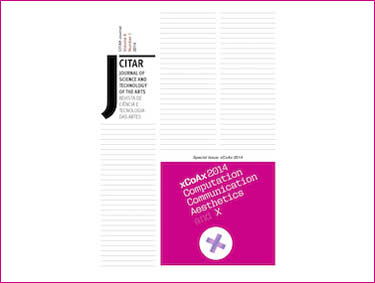
Channels of Ventriloquism in New Media Artworks
CITAR: Journal of Science and Technology in the Arts
Volume 6, Number 1, 2014
This paper extends research relating puppetry and new media art. Two artworks, Toast and Ventriloquisms for Fun and Profit, are used as case studies. Throughout the text, ventriloquism diagrams illustrate directional transmissions of speech. Roles of code, artist, and participant in new media artworks are considered.

CRUMB Doctoral Research: Reflections on
Creating and Exhibiting Digital Art
ISEA 2013 Conference Proceedings
co-authored paper with Suzy O'Hara, Marialaura Ghidini,
Dominic Smith, and Roddy Hunter
Based on doctoral research undertaken at CRUMB, the online resource for curators of media arts, this paper gathers together knowledge from different experiences of producing and presenting digital arts, from the perspectives of both curators/producers and artists. Suzy O’Hara reflects on art, technology, and the commercial digital sector, Marialaura Ghidini discusses hybrid models of offline and online curating, Dominic Smith writes about models of open source production compared to participative systems in new media art, Victoria Bradbury investigates the performativity of code, and Roddy Hunter identifies curatorial models of practice that articulate the principles of The Eternal Network.

Teaching Code Through Collaborative
Interdisciplinary Performance
Media-N Journal
Volume 8, Issue 1, 2012
This paper reflects upon ways that I introduced coding concepts to my introductory computer art classes at Ball State University. I discuss a set of special topics courses that I created to realize a project called Metabellum. With the objective of creating an interdisciplinary, large-scale collaborative work, students learned to use code as an expressive medium.

The Light in the Background is the Sun
Master's Thesis, Alfred University, 2009
The Light in the Background is the Sun includes four bodies of work. Pioneering considers a contemporary re-use of the magic lantern alongside live video performance. Metamorphoses investigates the artwork Blue Boar, which re-tells the story of my 10th-great-grandmother Mary Bradbury's 1692 Salem Witch trial. 37 Red Hats describes a project in which I visited and documented every Pizza Hut restaurant in Beijing in 2008. Ventriloquisms encompasses several video, interactive, and performative works that activate "electronic puppetry".
















